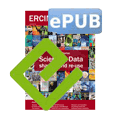by Juan Bicarregui and Brian Matthews
Today’s scientific research is conducted not just by single experiments but rather by sequences of related experiments or projects linked by a common theme that lead to a greater understanding of the structure, properties and behaviour of the physical world. This is particularly true of research carried out on large-scale facilities such as neutron and photon sources where there is a growing need for a comprehensive data infrastructure across these facilities to enhance the productivity of their science.
Photon and neutron facilities support fields as varied as physics, chemistry, biology, material sciences, energy technology, environmental science, medical technology and cultural heritage. Applications are numerous: crystallography reveals the structures of viruses and proteins important for the development of new drugs; neutron scattering identifies stresses within engineering components such as turbine blades, and tomography can image microscopic details of the structure of the brain. Industrial applications include pharmaceuticals, petrochemicals and microelectronics Research carried out at neutron and synchrotron facilities is rapidly growing in complexity. Experiments are also increasingly being carried out by international research groups and in more than one laboratory. Combined with the increased capability of modern detectors and high-throughput automation, these facilities are producing an avalanche of data that is pushing the limits of IT infrastructures.
In addition, there is a push from policymakers and some scientific communities to make data ‘open’ in order to encourage transparency and sharing between scientists. It therefore makes sense to build a common data infrastructure across different photon and neutron facilities that makes data management and analysis more efficient and sustainable and maximises the science throughput of their user communities.
Established in 2008 by the ESRF, ILL, ISIS and Diamond, the PaN-data consortium now brings together 13 large European research infrastructures that each operate hundreds of instruments used by some 33,000 scientists each year. Its aim is to provide tools for scientists to interact with data and to carry out experiments jointly in several laboratories. Research undertaken by PaN-data partners show that more than 20% of all European synchrotron and neutron users make use of more than one facility (see Link below). It is therefore of considerable value to offer scientists a similar user experience at each facility, and to allow them to share and combine their data easily as they move between facilities.
At the heart of PaN-data is a federated infrastructure of catalogues of experimental data that allow scientists to perform cross-facility and cross-disciplinary research with experimental and derived data. The catalogues capture information about the experiments and associated raw data, which can then be associated with analysis processes and to the final publication of results, which feed back into new research proposals.
The first stage of the project, PaN-data Europe, which ran from 2000–2011, focussed on data policy, user information exchange, scientific data formats and the interoperation of data analysis software. Essential elements of a scientific data policy framework were agreed upon, covering aspects such as storage, access and the acknowledgement of sources.
A second project, PaN-data Open Data Infrastructure, from 2011-2014, included a common user authentication system to allow users registered at one facility to access resources across the consortium using one identity; the use of standard formats so that data generated by one instrument can be readily combined with data from others; and a federated data cataloguing system with a common metadata standard, allowing users to access data generated from different sources in a uniform way. The project also extended data management across the data continuum, into analysis processes so that users will able to trace how data are used once they have been collected. Since a data infrastructure must be sustainable, the consortium is investigating which processes and tools need to be changed to allow a facility to move towards long-term preservation, and also considering approaches to scaling data management as data acquisition rates continue to grow.
PaN-data intends to continue working together, and also extend their collaboration. The Research Data Alliance (RDA) is bringing together data managers and scientists throughout the world to work together in areas such as metadata, data publishing, digital preservation, and policy enactment. PaN-data has helped establish an RDA Interest Group on the Data Need of Photon and Neutron Science (PaNSig) to encourage the development of best practice for data management in the photon and neutron community across the world. The ultimate vision is to allow users to move within and between facilities without having to learn and use new computing systems. By allowing data to be moved, shared and mixed together across the complete lifecycle of an experiment, scientists can concentrate on getting the best science from the facility.
Link:
PaN-data Counting Users Survey http://pan-data.eu/Users2012-Results
Please contact:
Brian Matthews, STFC, UK
E-mail:











